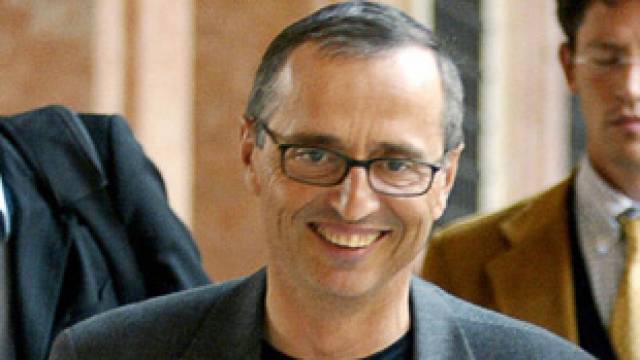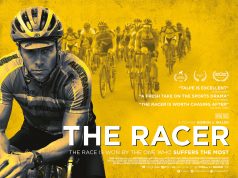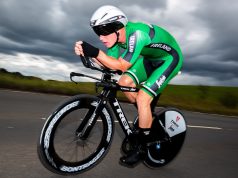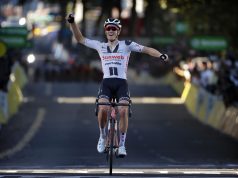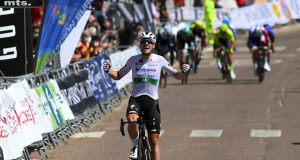Michele Ferrari has responded to the recent release of the CIRC report on his website www.53×12.com. The notorious doctor has written of what he sees as weaknesses and inaccuracies in the report.
His response is below:
Someone already defined it a “smokescreen to hide the failures of WADA”. Personally, the voluminous CIRC report seemed partial and disappointing, historically lacking, as well as a sort of encouragement (and source of information) for those who want to continue doping.
The Independent (?) Commission For Cycling Reform (?) seemed first of all focused on excluding episodes of corruption between Armstrong and the UCI, but avoided interviewing Floyd Landis, key witness to the affair, and accepted versions and documents supplied directly from the UCI: indeed, it is the CIRC itself that admitted on page 17 that it received the case information electronically from the UCI.
After a brief overview on the meaning of “being clean”, “culture of doping”, “omertà” and “cheating”, the report laid out an incomplete history of doping practices, starting with brandy and champagne in bottles, then proceeding through stimulants, getting to transfusions and EPO, but minimizing the eras of cortisone and anabolic steroids abuse (’70s and ’80s) that largely involved that generation of athletes.
After reporting the usual historical inaccuracies of the “death of 18 (!!) European Cyclists in the late ’80s due to EPO”, of the “cyclists riding in the middle of the night to activate blood circulation” and ascribing PDM’s 1991 episode to “typical symptoms of EPO overdose”, on page 48 the report accurately described doping methods, dosages, logistics information useful to those wishing to start/continue doping practices.
The report briefly mentioned the controversial doping cases at the TdF of Landis (2006) and Vinokourov (2007), but did not comment nor investigated why, in the case of the Kazakh, the French Justice Department never got involved in the case (unlike all other doping cases at the TdF): perhaps because it was aware that the evidence of NON-DOPING by homologous transfusion remained in the athlete’s body for 120 days (red blood cells live that long).
The role of Anne Gripper in the affair has resurfaced, as seen in the recent cyclingnews.com interview with the former head of UCI’s anti-doping department: “… he (Pat McQuaid) ENCOURAGED me to do what I needed to do to make sure that the anti-doping programme remained strong”…
The report stated that “at least 69 (doping) doctors between 1985 and 2014 have facilitated the doping of cyclists”, but of course made the names of the few and usual suspects: Ferrari (especially, despite stating at page 50 that the “doping” of Dr. Ferrari is reportedly “conservative”), Fuentes, and Leinders.
After pointing out that only riders involved in acts of doping were interviewed, often in the hope, sometimes vain, for some sort of ban reduction, the answer to the question of how many cyclists today still dope is: “between 20 and 90%”!!
In other words: “we do not know… but, despite the efforts, propaganda and money (plenty of) spent, the result is always the same”, in fact admitting yet another failure of a system that’s been working for half a century.
A little further, on page 58, it is revealed how the expensive biological passport (ABP), “a flagship in the fight against doping”, is not able to highlight micro-doses of EPO and micro-trasfusions and that there are new performance-enhancing drugs, prohibited and not (yet) included in the list, “forgetting” to mention the most dangerous two: cobalt and carbon monoxide, very topical nowadays.
In the subsequent pages, the report described alleged episodes that are part of an investigation (Padova) which, five (!) years since its inception, is not yet complete, primarily involving myself.
On page 67, it is described how “a cyclist, positive to EPO in 2013, has received the substance from an amateur cyclist who works in a pharmacy in northern Italy and in the distant past would have been a conduit for a consultation between Dr. Ferrari and such professional cyclist, a service that would be paid for with the delivery of drugs to Ferrari”. A story that I immediately dismiss as “colossal bullshit”, completely made up.
For the sake of completeness, the report also claimed that the above mentioned amateur cyclist has “provided substances to cyclists of as much as 4 professional teams” (of course, without naming them).
Just as anonymity is guaranteed to the “Team Manager, Sports Director and Nutritionist of a ProTour Team who would have advised some riders with a doping program: 1000 ml (!) Of EPO Zeta every other day, at 11 p.m., alternating with HGH and Lutrelef “, with subsequent well detailed dosage reduction protocols. Information on how to avoid/mask positive tests are further handed out on page 68.
On page 85, a fleeting reference to the “Technical Cheating” showed up: frames, saddles, tubes, clothing, while only half a sentence is dedicated to “motors in frames”, when this problem has existed for 10 years, with the UCI never devoting a single comment to well known events.
On page 122, when it came to the accusations made by Rasmussen with regards to UCI’s anti-doping official Dr. Mario Zorzoli, the Commission considered “unacceptable” the leak of such serious allegations before they had been fully investigated (by them, obviously): a proper affirmation of protection of civil liberties that apparently seems to apply only to Dr. Zorzoli, a “honest expert scientist”.
Even the allegations, widely reported in the press at the time, of Landis regarding Martial Saugy (Laboratory of Lausanne) were to be censored (page 144) when not sufficiently investigated in accordance with WADA’s Code in favor of the “Fight Against Doping”, only to avoid once again, without giving convincing explanations, to interview Landis on the matter.
On page 161, the Commission addressed the above mentioned episode: Armstrong “positive” in the Tour de Suisse edition of 2001, dismissing the case with a simple “strong suspicion of the presence of rEPO” bringing the % of basic band below 80%, limit then needed to consider a test as positive. The same Saugy declared that in 2001 the limit was precisely 80%, but this limit was moved to 85% by 2002 in order to avoid the risk of false positives (the laboratory of Paris had already raised the limit to 85% back in 2001… confirming doubts about a limit too hastily accepted by the laboratory in Lausanne).
Well, I remember the subject of a phone call I received from Bruyneel back then: he mentioned the reading to be 82%, which, with the rules of that time, had to be considered (rightly or wrongly) as a positive test.
Evidently, whether to save Armstrong, or whether to protect the newborn EPO test, the UCI decided to dismiss and shelve away, just as the CIRC did on page 165: “Armstrong did not test positive for EPO during the 2001 Tour de Suisse”, as Hamilton and Landis had instead stated in their USADA affidavits (witnesses apparently considered “reliable” for some other accusations, but not for this one).
On page 190, CIRC narrated the whole unfolding of events with regards to how the EPO test results of Armstrong in the 1999 TdF were revealed, a story that became public immediately after his victory at the 2005 TdF: a sordid matter of dirty tricks, forgetting to mention that the very one who sent (illegally) the identification codes of the tests to journalists was none other than Dr. Mario Zorzoli, head of UCI’s anti-doping.
I do not personally know Dr. Zorzoli, but I already mentioned on another article how he made some Biological Passport blood tests of three Liquigas athletes training on Teide in 2010 “disappear”, since the Team Doctor (a friend of his) deemed them as “unreliable” and insidious for the ABP profile of the riders.
The report ended with the hope of “nocturnal testing” to be introduced with the purpose of catching any potential “micro-dosing” in the case of athletes with “serious and specific suspicion”, obviously identified by an impartial, unbiased UCI beforehand.
Promptly, the first one on top of riders “Nice List”, Chris Froome, agreed: “We must do everything to tackle doping”.
We will see in the future if he will also be so agreeable to the availability of a digital rectal examination when it will (hopefully not, eh… but you never know) be requested from the UCI in the name of the Holy War against Doping…

